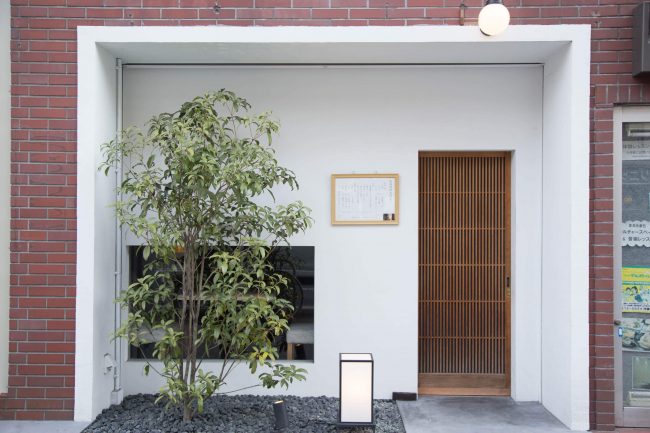Miso Japanese Restaurant: A Kyoto Culinary Experience
Apr 26,2018
Miso Japanese Restaurant: A Kyoto Culinary Experience
Apr 26,2018
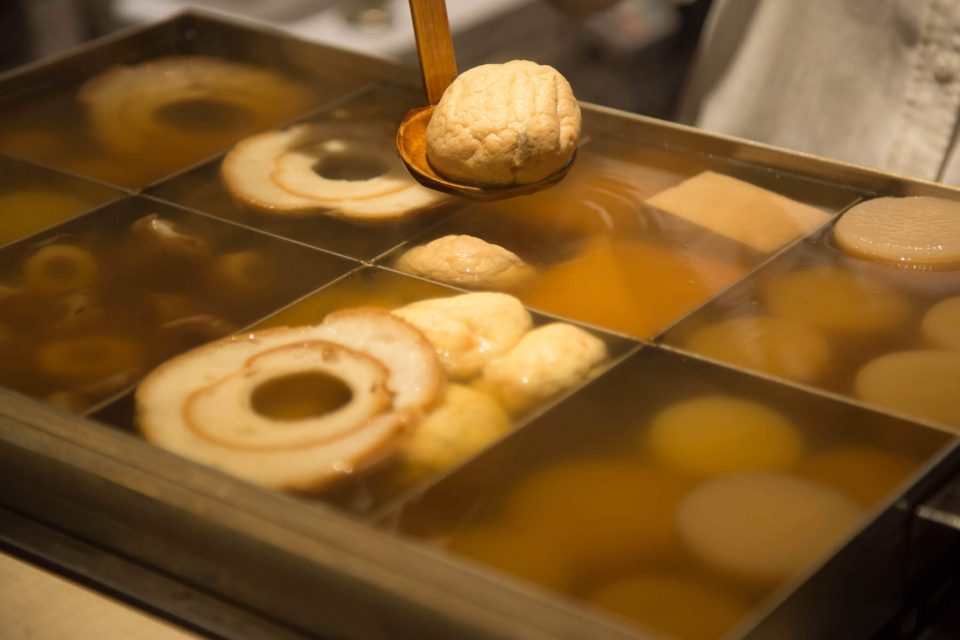

Kyoto’s white miso is used in countless dishes and sweetmeats in Washoku (Japanese cuisine), from ozōni (a New Year’s dish of rice cakes and vegetables in soup) to saikyo-zuke (fish preserved in miso), to kamo nasu and nama-fu dengaku (miso-coated eggplant and gluten cakes), to the aburi-mochi (grilled rice cakes) sold in front of Imamiya Shrine, and the hanabira-mochi (a traditional sweet with a salty core) enjoyed at New Year. In this edition, we speak to Sho, a restaurant specializing in miso cuisine, whose owner fell in love with the flavor of white miso through Yamari Shoten, a white miso specialty store renowned for the rich flavor, sweetness and elegant taste of its miso pastes.
Centering around Kyoto-style oden (a simmered dish of vegetables, eggs and variously shaped fish cakes), Sho’s miso-centric menu contains such innovative items as froth-topped miso soup and miso croquettes.
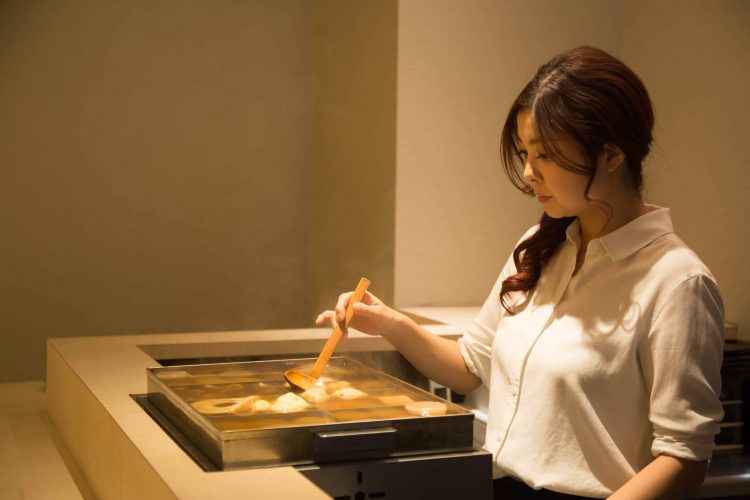
Sho was established on Marutamachi Dori, close to Kyoto Gyoen National Garden, in July 2016. Its owner, Kawahara Nami-san, was previously in the apparel business.
“Reading a book on oden in the school library as an eighth grader, I decided I would run an oden restaurant one day. Although oden is familiar to everyone in Japan, it’s flavor varies drastically across the country. This was fascinating to me in a way no other dish was. I decided to do what I pleased until the age of 35, then devote my life to oden. But I wouldn’t become a chef. I’d learn how to run a business and interact with customers, keeping oden at the back of my mind all the while. Along the way, I encountered Yamari Shoten’s white miso. It was not too sweet and its deliciousness packed a punch.”
While all rice-based miso pastes are made with soy beans and rice kōji (malted rice), white miso is a way to make a sweeter, lighter colored product by using a generous amount of rice kōji and a shorter fermentation time. Renowned as a masterpiece with an especially refined flavor, Yamari Shoten’s white miso is beloved by many chefs and used by many ryōtei and kaiseki restaurants serving elevated and haute Japanese cuisine.
“I was completely obsessed, so I started with Yamari Shoten and oden as my two main pillars,” says Kawahara-san.
“A restaurant specializing in miso cuisine is something you’d expect to find in Kyoto, but yet there was none. With live kōji, miso is a very healthy condiment. It’s a proud condiment that has what it takes to make it abroad, so I feel it my duty to make it more widely known among Japanese and non-Japanese people alike.”
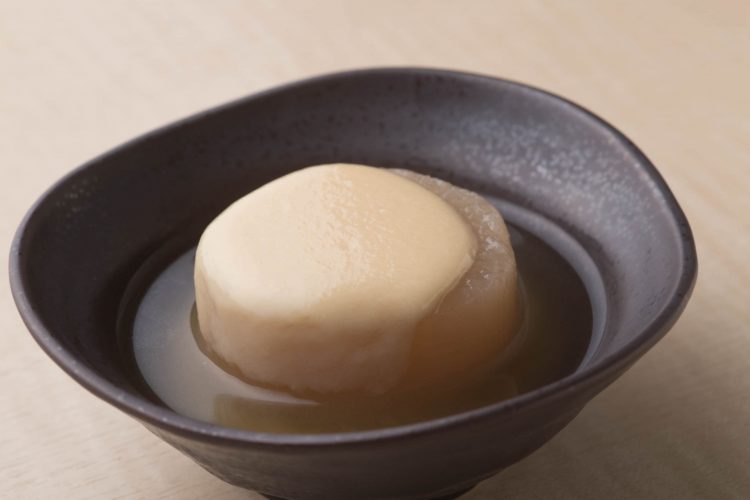
Conceived over so many years, the flavor of Sho’s oden is based on a combination of dried bonito flake and kelp ichiban dashi, a delicate stock brewed in hot water, and chicken bone stock. The chicken stock is simmered until it becomes cloudy to extract all the flavor, then strained to make it clear. This broth is a foil for chunky ingredients such as daikon radish that has been simmered until it is soft enough to insert a chopstick, and soft-boiled eggs with runny yolks. It is all topped with white miso that has been thinned with ichiban dashi stock. The flavor is characterized by a sparingness, the seasoning of which is perfected with the addition of the miso. The aroma of the elegant Kansai-style dashi stock and the smoothness of the miso complement the oden ingredients beautifully.
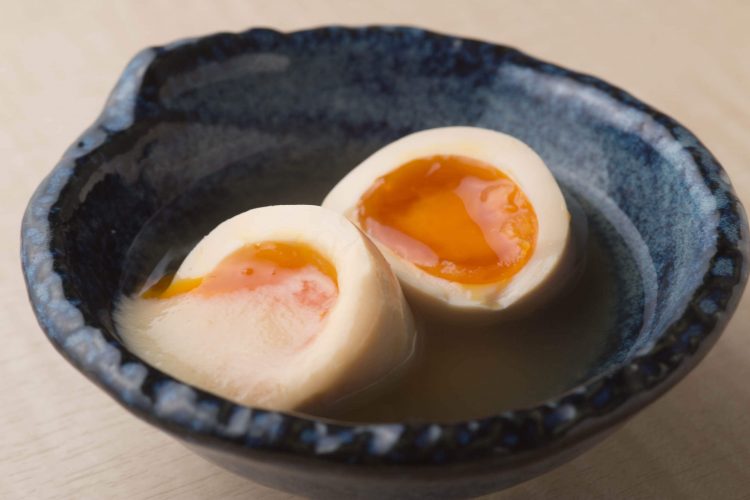

One feature is that dishes other than the oden all contain Yamari Shoten’s miso, too. The “Sho froth-topped miso soup,” which is delivered to squeals of delight, is a striking dish of miso soup with soft-boiled egg, clams and grated yam topped with miso-flavored froth. The fluffy bubbles lasting until you finish the soup is a surprise; it’s trick that delights the eyes as well as the tongue.
The “Koropote” (croquette potato salad), which looks just like a croquette, is an innovative dish comprised of potatoes and boiled eggs from the oden vat mixed with the oden cooking liquid and topped with fragrant toasted panko breadcrumbs and a miso sauce.
Other dishes include miso karaage, where the deep-fried morsels are seasoned with barley miso; dashi-maki tamago (dashi rolled egg) sweetened with miso; and veggie burgers accented with “bagna miso.” It’s a whole lineup of unexpected miso dishes.
“I’m the ideas person. The head chef, who has a background in Japanese cuisine, brings my ideas to life, so they are firmly based in and observe the basics of Japanese cooking,” explains Kawahara-san.
“Our style is not to use an array of seasonal produce in their short seasons, but to have mainstay dishes. When customers come hankering after something, we want to meet them with the same taste, the same dish each time.”
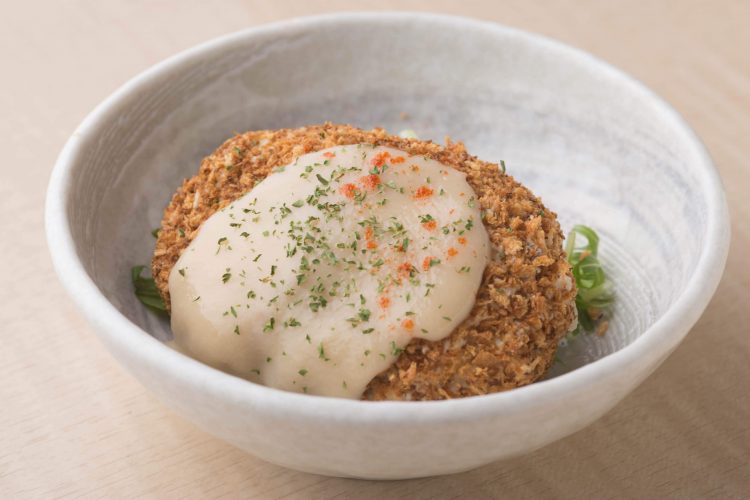
About shō (嘗), the unusual character of the restaurant’s name, Kawahara-san notes: “It has the meaning ‘to enjoy to the very last drop’. Plus, if you split it into its components, it becomes mouth (口) is tasty (旨い).”
If you’re looking for somewhere to savor miso cuisine till the very last bite, this is it.
